Safety
Courses
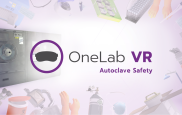
OneLab VR: Autoclave Safety Scenario
OneLab VR encompasses 12 different laboratories in a 50,000-square-foot virtual facility created for clinical and public health laboratory training. It also includes over 100 (and counting) laboratory-specific pieces of hardware and equipment.
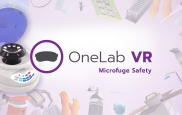
OneLab VR: Microfuge Safety Scenario
OneLab VR encompasses a 50,000-square-foot virtual facility focused on clinical and public health laboratory training. OneLab VR includes 12 different laboratories and over 100 (and counting) laboratory-specific pieces of hardware and equipment.
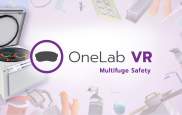
OneLab VR: Multifuge Safety Scenario
OneLab VR encompasses a 50,000-square-foot virtual facility focused on clinical and public health laboratory training. OneLab VR includes 12 different laboratories and over 100 (and counting) laboratory-specific pieces of hardware and equipment.
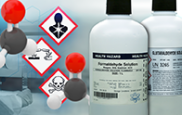
Fundamentals of Working Safely with Formaldehyde and Glutaraldehyde
This course aims to equip you with knowledge about the properties, health risks, hazard controls, work practices, and protective equipment needed to safely handle formaldehyde and glutaraldehyde.

Fundamentals of Bloodborne Pathogens
This course provides training to help you develop the knowledge and skills to protect yourself and others while working with blood and OPIM. Your employer may require additional information and training to protect you from specific workplace hazard.
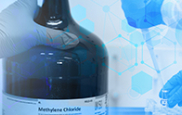
Fundamentals of Methylene Chloride Safety
This basic-level course provides information on the chemical properties and adverse health effects associated with the use of methylene chloride, or dichloromethane (DCM), in clinical and public health laboratories.

Fundamentals of Laboratory Safety
This course provides an overview of laboratory safety for clinical and public health laboratory personnel.
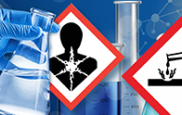
Fundamentals of Communicating the Hazards of Laboratory Chemicals
This basic level eLearning course provides information on communicating the hazards of laboratory chemicals.

Fundamentals of Handling Compressed Gas Cylinders Safely
This course introduces clinical and public health laboratory professionals to the physical and chemical hazards associated with compressed gas and compressed gas cylinders, control measures to mitigate risks, and how to work safely with compressed gases and gas cylinders in the laboratory.
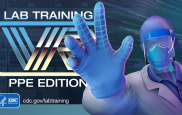
LabTrainingVR: Personal Protective Equipment (PPE) Edition
Practice selecting the appropriate personal protective equipment (PPE) and properly donning and doffing it in a virtual museum.

Introduction to Laboratory Risk Management (LRM)
Apply risk management principles and practices to laboratory settings.
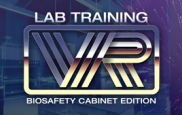
LabTrainingVR: Biological Safety Cabinet Edition
A virtual reality (VR) course: Practice setting up, working in, decontaminating, and shutting down a biological safety cabinet (BSC) in a virtual laboratory.

Fundamentals of Working Safely in a Biological Safety Cabinet (BSC)
Identify major parts of a Class II biological safety cabinet (BSC) and implement proper practices for its safe and effective operation.

Fundamentals of Personal Protective Equipment (PPE) in Clinical Laboratories
Apply risk management strategies to identify hazards, assess risks, and select appropriate personal protective equipment (PPE) options.

Fundamentals of Chemical Fume Hood Safety
Identify major components of a chemical fume hood and implement proper practices for its safe and effective operation.
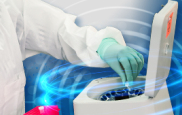
Fundamentals of Centrifuge Safety
Identify major parts of a centrifuge, types of centrifuges, potential hazards, how to work safely with a centrifuge, and emergency protocol. Implement proper practices for its safe and effective operations.
Events
Securing the Future: Exploring the Importance of Laboratory Biosecurity
Laboratory biosecurity encompasses a set of measures designed to prevent the loss, theft, or inte...
Quality Assurance and Safety for Point-of-Care Testing in the Community Pharmacy Setting
Ensuring patient and provider health and safety while achieving accurate and reproducible results
...Something Is Strange - Let's Notify the LRN!
Clinical laboratories must be alert for unusual and potentially infectious agents and immediately
...Is it Magic or Simply a Great Biosafety Plan?
A comprehensive biosafety plan serves as the backbone for developing a strong biosafety culture.
...Evaluating Your Laboratory’s Risk Management Process or Quality Improvement Process
Quality management can help prevent risk, and risk management can help improve quality.
...Risk Assessment in Clinical Laboratories
When Ebola entered the United States in 2014, healthcare workers were faced with the very real th...
Personal Protective Equipment (PPE) for Point-of-Care Testing
This basic-level presentation will discuss the importance of wearing PPE when performing point-of
...CLIA Proficiency Testing (PT) Final Rule, CMS-3355-F
This presentation will provide information on the CLIA Proficiency Testing (PT) Final Rule which ...
Recognizing, Identifying, and Reporting the Identification of Select Agents and Toxins
This beginner-level webinar is for clinical and veterinary laboratory professionals to understand...
Biosafety Practices and Reporting Occupational Exposures for Select Agents and Toxins (Part 2)
This basic-level webinar is designed to help clinical and veterinary laboratory professionals und...
Updated Storage and Shipping Guidance for Submission to CDC Infectious Disease Laboratories
Learn more about CDC’s new recommendations concerning specimen storage and shipping best practice...
Reducing the Risks of Clinical Laboratory Infectious Diseases
In this webinar, Dr....
When Receiving Samples from Patients Suspected to be Infected with Ebola: What’s the Plan?
Learn how clinical and public health laboratories collaborate with healthcare teams to provide th...
I’m a Frontline Facility – How Can I Safely Test Clinical Specimens From a Suspected Ebola Patient
Join us for our next OneLab Network Event in which will give an overview of the current Sudan Ebo...











